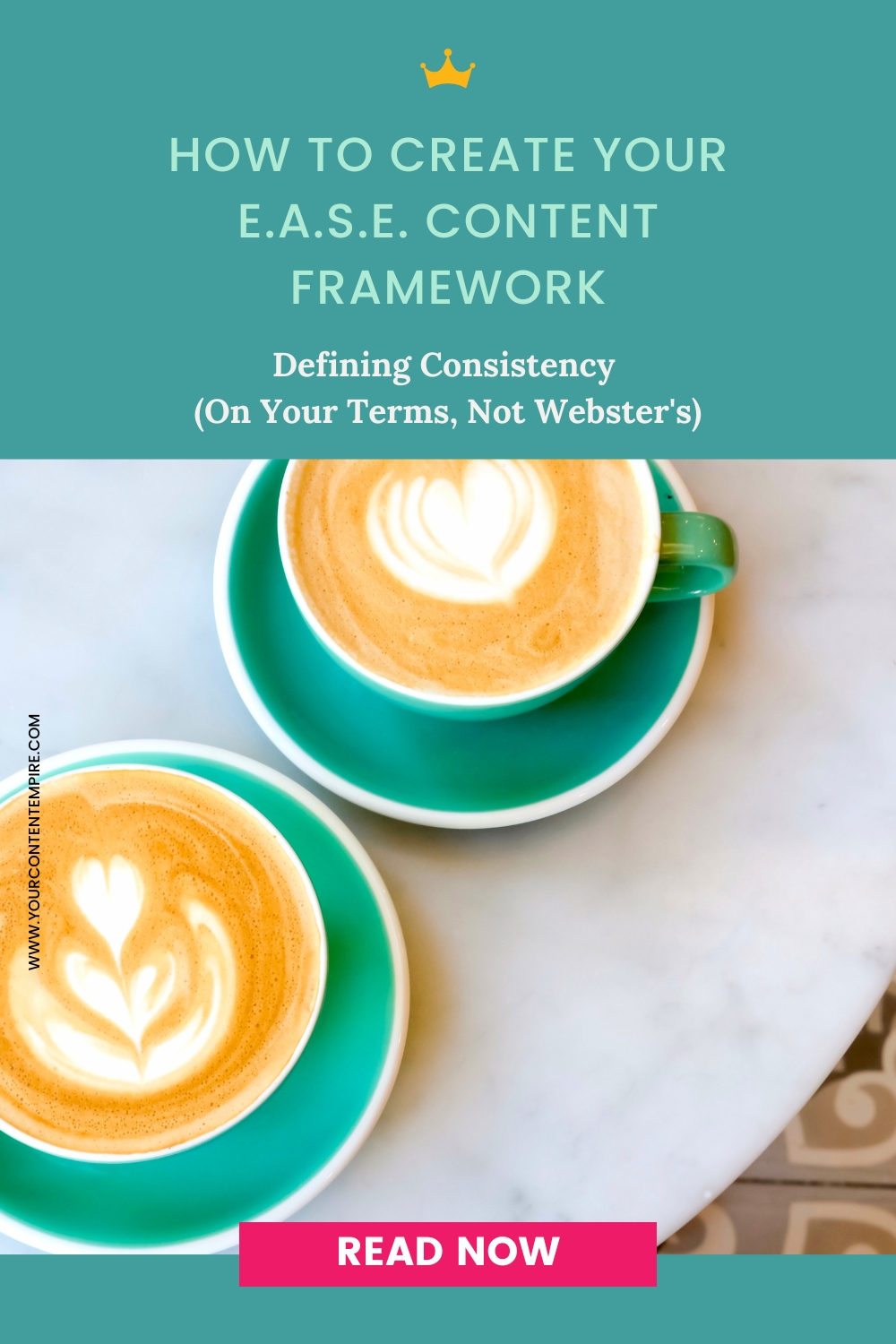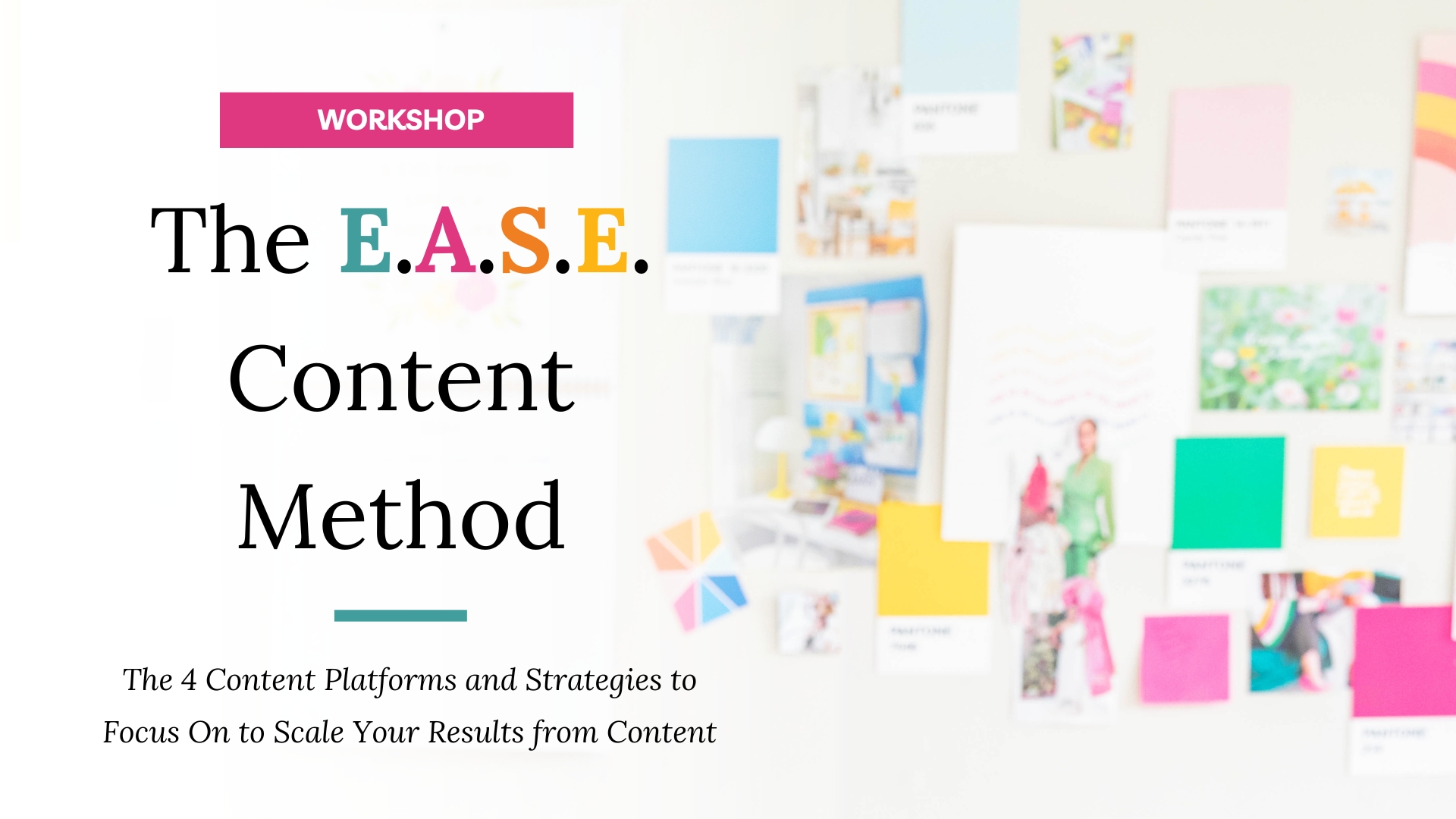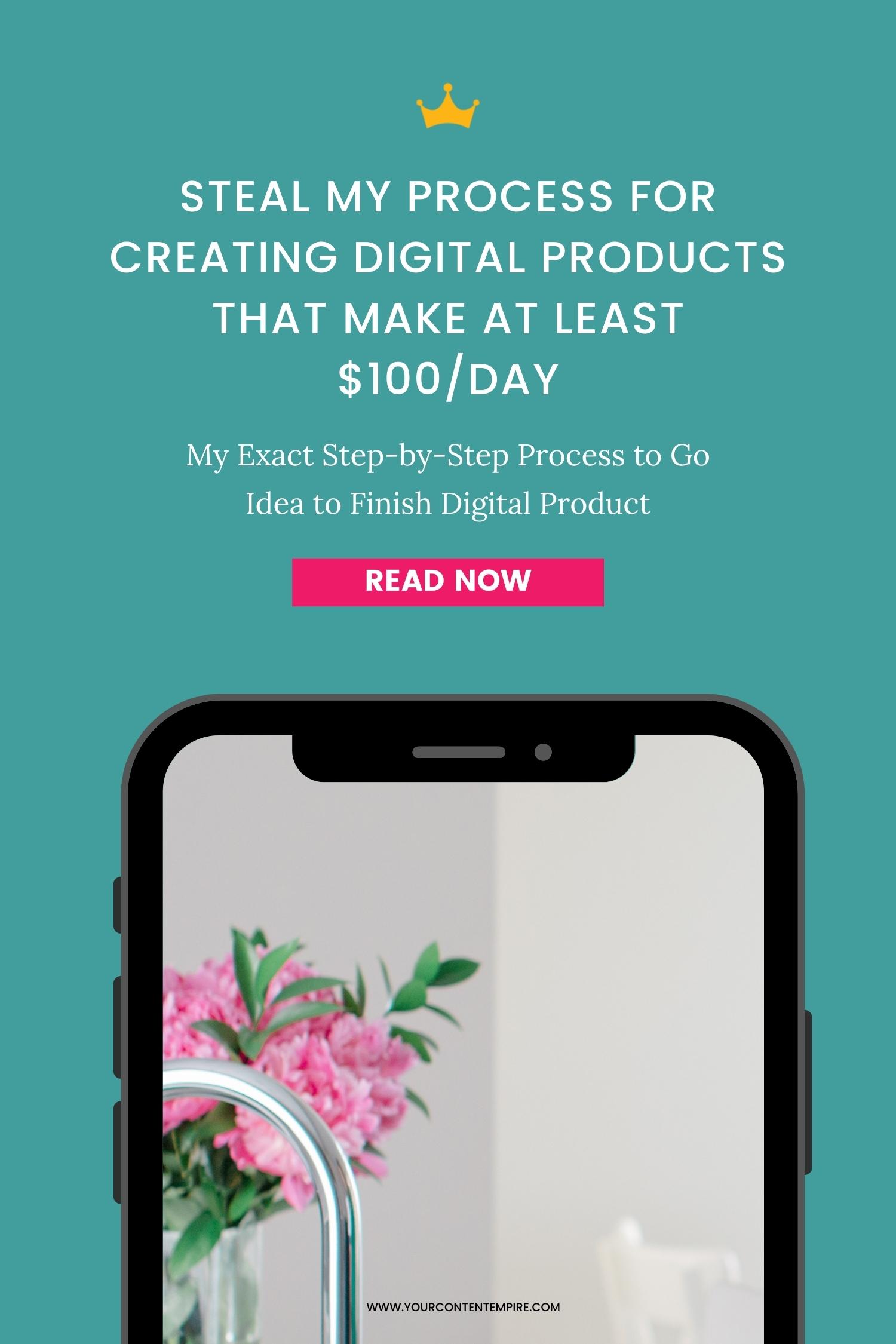It’s time to introduce more EASE into your content strategy (cause nobody’s getting anywhere by trying to do all the things and in all the places)
So in this week’s episode, I’m sharing a lite version of how to create your EASE content framework. Here’s what we’re discussing:
- Defining Consistency in Content: Pick how often you wanna post (like weekly or monthly). No hard rules, just what feels right for you!
- The Four Pillars of Content Strategy: Expertise: Dive into the biggies – Expertise, Attraction, Sales, and Engagement. They're your secret sauce to content that gets ROI.
- Engagement and Two-Way Conversations: It's all about the chit-chat. Keep the convo going with your peeps (because who doesn't love a good back-and-forth?). Keep things real and keep 'em coming back for more!
Want to Learn to Put This Strategy Into Action?
Get instant access to my E.A.S.E. Content Strategy Workshop where you'll learn the 4 content platforms and strategies to focus on to scale your results and sales from content. Plus you'll get my exclusive EASE Content Planning Spreadsheet for FREE ↓
FULL TRANSCRIPT:
Welcome back to the Content Coffee Break podcast. I'm so excited for this topic today because I feel like we have been building up to this one for the past few weeks. And really, ever since I launched this podcast. In other news, this past weekend, I just hosted a lunch party with friends and family, and an end-of-summer party for our other business, First Sip Mobile Bar.
And it was super exciting. Oh gosh, it was just so touching to have the support of the people that we love there to help us kick off that business in style. It's a great little side project, and I'm doing it with my husband. One of the things that this made me think about was launching a super business, a second business. It requires you to be super strategic about what platforms you're using and the content side of things. Not only through the agency am I running other people's content and editorial calendars, but I also have a team helping me do that. I'm definitely not responsible for all of it. My clients have all of the amazing ideas, and they are the ultimate subject matter experts. Not only am I doing all that in the agency, but I'm also running the editorial calendar for Your Content Empire, this show mainly, as well as a new platform and a new business. I'm having a whole other set of engagement, expertise, sales, and attraction platforms for the First Sip Mobile Bar side of things too. So, with that, I've found that I need to be more disciplined about getting sidetracked by shiny object syndrome and wanting to adopt all these other projects.
That's why, personally, I'm using the EASE content framework over on that side too, for the new business, as well as for Your Content Empire. So, I'm not just talking about this thing; I am walking my talk here as well. Let's just recap quickly about what the EASE content strategy framework is. Each of those letters, E-A-S-E, represents the four different types of content platforms or strategies that every business owner should include in their overall content strategy. An expertise platform where you can establish your expertise, win people over with your know-how, and give them a teaser or taster of what your methodology, frameworks, outlook, and processes can really do for them. We also have your expertise and attraction platform, which is how you get in front of new eyeballs with your content. So, we're making sure that you're not just promoting your content to people who already know and love you, but we're also doing our part to grow your audience and get in front of the people who need what you offer too. Then we have your selling platform, a methodology to sell to your existing audience. Whether this is conversion, Facebook ads, a micro offer, a sales funnel, or quarterly launches. And then our engagement platform. We want to make sure that we're not just focused all on selling and getting new people, but we also need to focus on engagement and turning our audience into a community, building those social bonds, those connections, and facilitating those two-way conversations. These are, as I said, the four different types of content platforms or strategies that every business owner should be including.
But, with that being said, and it comes back to what we've talked about in the past couple of weeks: number one, you don't have to be, and shouldn't be, everywhere with your content. Even though we have these four things, you don't need two attraction platforms or two engagement platforms or two sales strategies. You can really just focus on your foundation and nailing one of each of these to make sure your strategy is well-rounded. You're continuing to grow, sell, engage, and establish yourself as the go-to expert and top of mind expert as well. You don't need to be everywhere. You shouldn't be everywhere because then you're splitting your focus, your effort, and the time you have available for content and marketing in too many places. If you can have a bucket for each of these and one strategy or platform that you're focused on for 30 to 90 days, then you can make the decision whether to delegate it, systemize it, continue on with it, or dump it. Is it time to break up? Right. Is this thing not working for me?
Last week, we talked about the number one mistake you're making with your content strategy. This was inspired by many recent conversations I've had. People come to me and say, “I feel like I am the best-kept secret in the industry. I do really good work. The people I work with love me.” But when we look at their content platforms, they have no attraction platform. So they're not growing their audience to support their sales goals. On the flip side, we have people growing their audience fast using techniques like participating in summits and bundles. But at the end of the day, those people don't buy because there's no invested relationship, which is where our engagement platform comes in, transforming those raw numbers into socially bonded numbers that might sing your praises and maybe become customers or refer you to others.
Speaking of this, did you know that I'm hosting a workshop for free this Thursday? It has my exclusive EASE content map template, a template that we're going to walk through to implement the strategy. You're also going to get much-needed content relief for your business. I'd encourage you to sign up. There will be a replay if you cannot make it live, but you can sign up at yourcontentempire.com/ease.
So, in this template, we go through choosing one platform or strategy, getting clear on the metrics we're measuring for each of these four platform types or strategies. I want to give a preview, a light version, of this process in this week's episode. It's not the full Q&A; I recommend you sign up for the workshop. We're capping it to about a hundred people to keep things intimate. There will be plenty of time for Q&A, so you'll get your questions answered if you can attend live. If not, catch the replay.
Let's dive into the EASE framework:
1. Expertise: Your expertise platform is where you put out your original ideas. It could be a podcast, a blog, or a YouTube video. The only rule is that it lives on your website. When promoting, direct people back to your site. For metrics, look at unique views, time spent, bounce rate, and popular articles.
2. Attraction: This is how you get your content and ideas in front of new people. Platforms that specialize in showing content to new users work best here. Look at metrics like the number of new visitors and email subscribers.
3. Sales: This is your strategy for converting leads into customers. Consider methods like evergreen sales funnels, Facebook ads, or launches. Metrics include sales numbers, amount in sales, and conversion rates.
4. Engagement: This is about two-way conversations with your existing audience. Think about where you like to engage with your audience and how often. Metrics are more qualitative here, focusing on the quality and quantity of conversations.
In conclusion, consider which platforms you'll use for expertise, attraction, sales, and engagement. Start thinking about this and sign up for my workshop to dive deeper. Until next time, have a great time crafting your easeful content strategy.
Ready to Implement?
Get instant access to my E.A.S.E. Content Strategy Workshop plus get my exclusive EASE Content Planning Spreadsheet for FREE ↓







